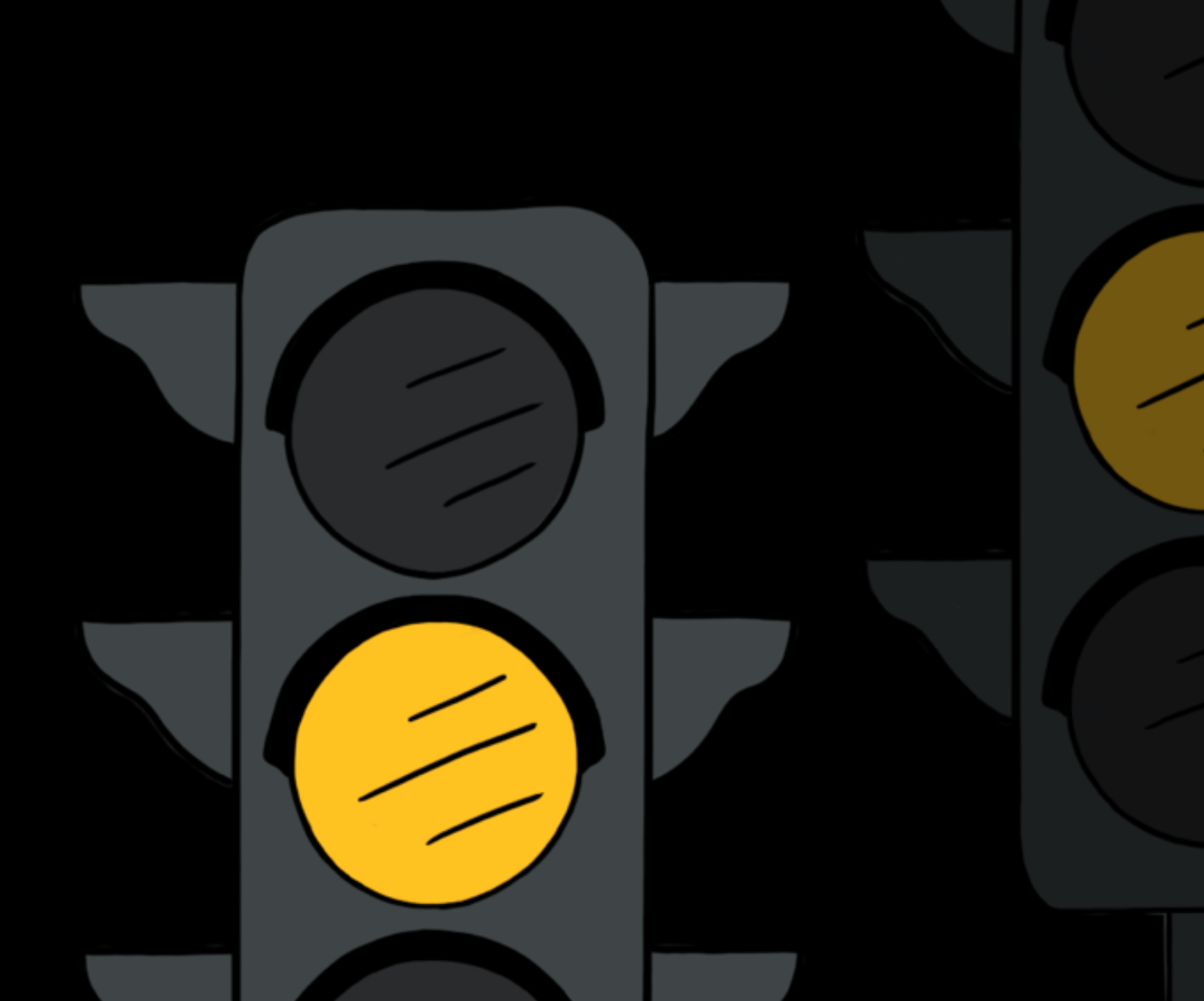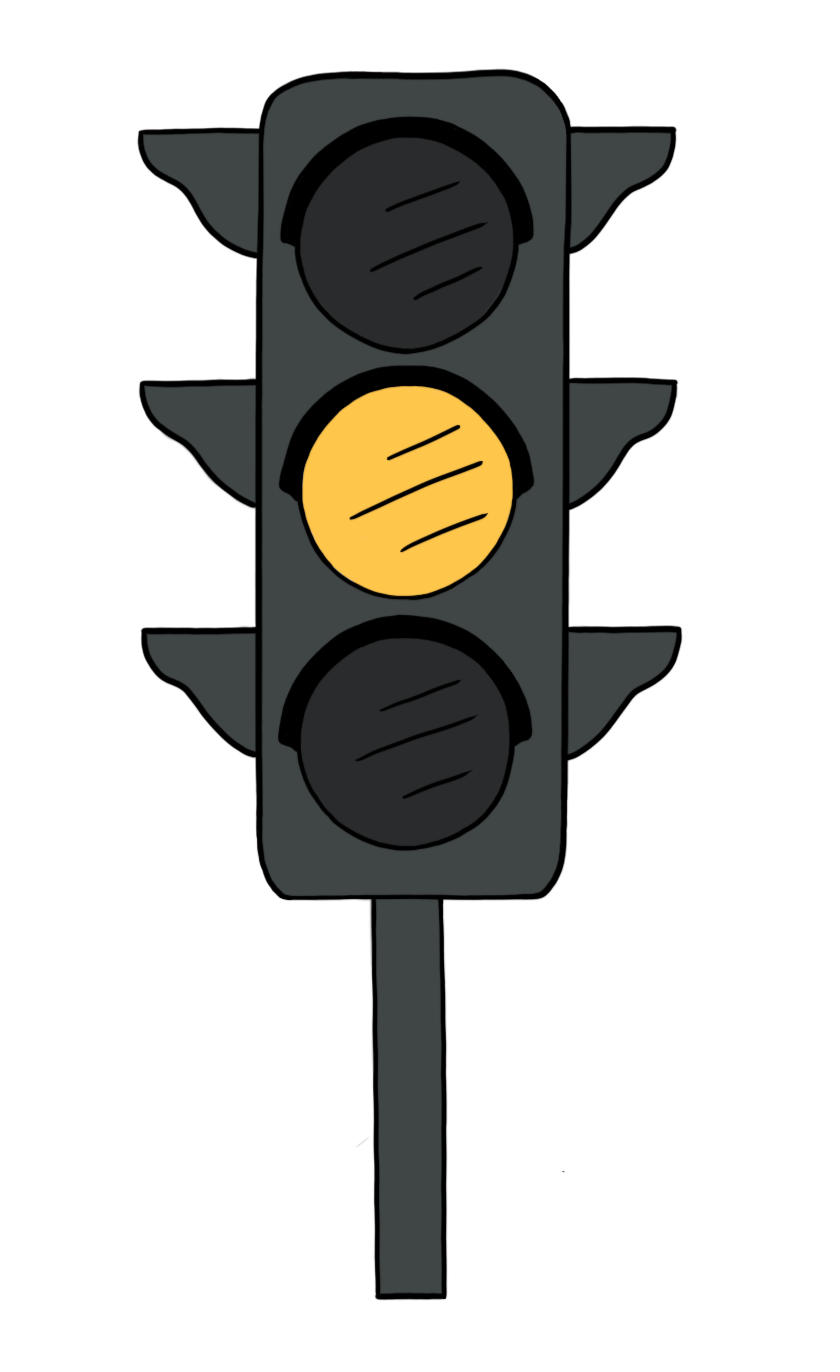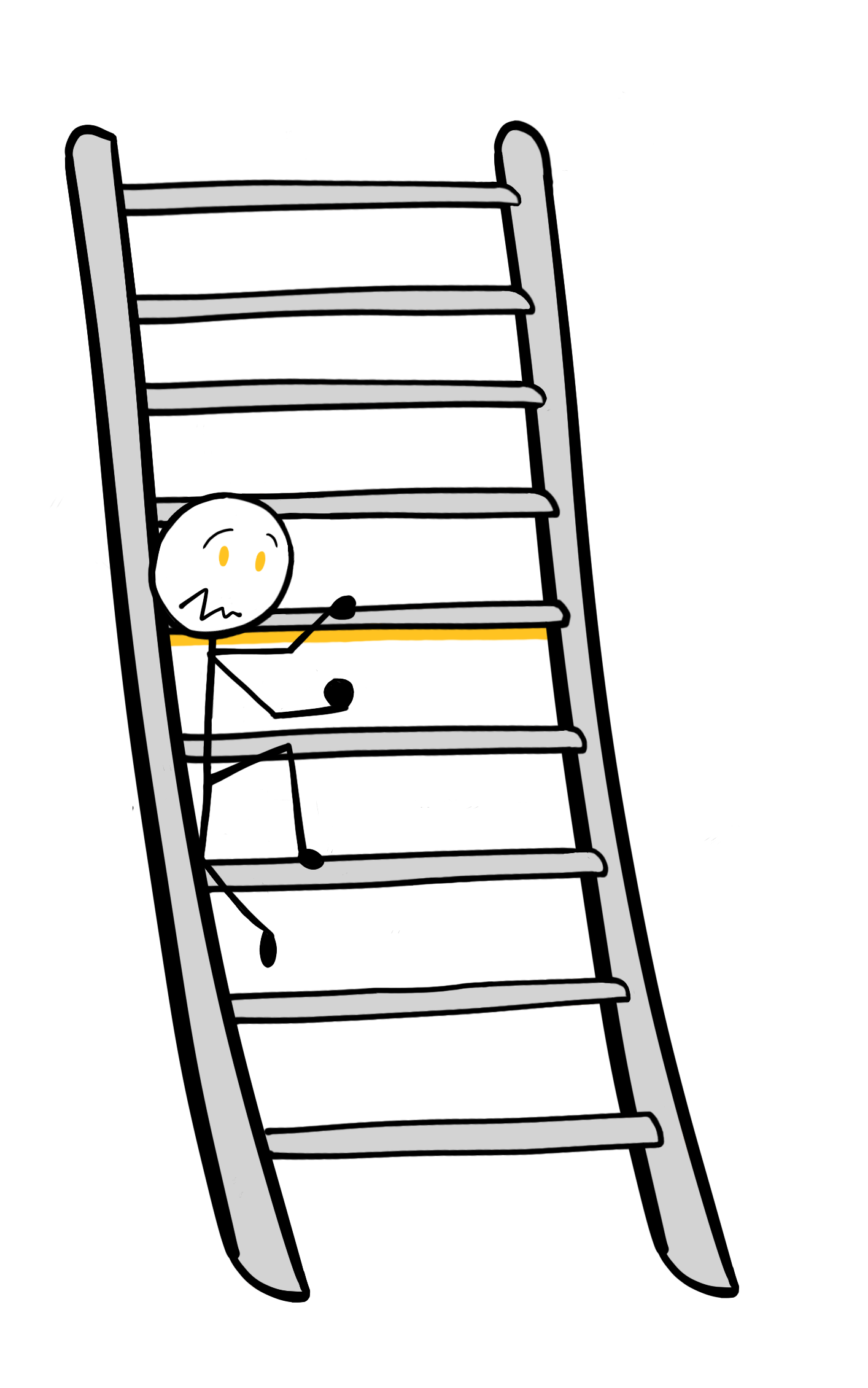
Yellow Zone: Mobilisation Response
This lesson talks about the "yellow zone", or our mobilisation response. We'll cover how it functions, and how to recognise what this nervous system state might feel like for you.
What is the yellow zone
In the first lesson we learnt that the yellow zone is our mobilisation response, where we can often feel anxious, agitated, tense or overwhelmed.
This is the sympathetic activation of the autonomic nervous system, which responds to danger and unease by increasing our heart rate, tensing the muscles, and preparing our body for action through the release of adrenaline.

Here our nervous system is hyper-aroused - our minds are alert and more attuned to signals of danger, our bodies are braced and ready to spring into action, and we feel “wired” or unable to “switch off”.
Why it does this

In terms of our evolution, this part of the nervous system is older than the social engagement system - it evolved in both mammals and reptiles as a way to survive by fighting or running away. This is what we know as our “fight or flight” response, and when our nervous system senses danger this system takes over without our conscious control. It developed in this way so that we can immediately take action to protect ourselves without having to think about it.
Once we find ourselves in this state it can take a bit of time to settle back down. And if we don't know how to discharge that active energy, or we’re constantly exposed to stress that’s too overwhelming for us, we might find that we’ve actually become stuck in this hyper-aroused or “activated” nervous system state.
Signs of the yellow zone
Below is a list of signs and signals of what the yellow zone can look like in the body and mind. Have a look at the list and notice which ones feel familiar in your life. You might find that only a few apply to you. If reading this list becomes distressing at any point, feel free to skip it.
What it might feel like in the body:
Racing heart
Shortness of breath
Nausea
Need to go to the toilet more
Muscle tension
Restlessness
Difficulty sleeping
Frustration/irritability/aggression
Feeling nervous/worried/self-conscious
Tightness in chest
Clammy hands
Difficulty concentrating
Feeling a knot in the gut
Light-headedness
Headaches
Trembling
Jaw clenching
Clenched fists
Tight feeling in throat
Face feels flushed
Stuttering or Stammering
Feeling 'wired' or on edge
Strong startle reflex
Hypervigilance
Difficulty making decisions
Crying
Excessive worrying
Thoughts when you’re in the Yellow zone might sound like:
“I’m not good enough”
“I’m going to mess up”
“Everyone is judging me”
"The world is a dangerous place"
“I shouldn’t be feeling this way”
“I need to make others happy, even if it’s at my expense”
“Everyone is wrong and they should feel bad”
"I have to be perfect"
“Everyone has to like me”
“I’m so stupid”
“I’m a burden... I shouldn’t speak up”
“Do my friends think I’m weird?”
“I should be better/more successful”
“What if there is something wrong with me?”
“No-one else worries about these things. Why can’t I just be normal?”
"What if I say the wrong thing?!"
“Everyone is looking at me”
Noticing when we get stuck
While being in this zone can feel very overwhelming or unpleasant, it’s also important to remember that it serves a purpose. It protects us from danger, keeps us moving and alert, and prevents us from going further down the ladder into a shut down or collapse response.
We’re not trying to say the yellow zone is a “bad” place that needs to be avoided.
What we do want to be mindful of, is if we notice ourselves going into the yellow zone at times when it doesn’t feel necessary or isn’t helpful for us, or if we start to feel like we’re getting stuck in there. Staying in a chronic state of hyper-arousal can impact our health, and prevent us from being able to be present in our daily lives.
Learning to regulate
I definitely don’t want seeing this list to become something extra in your life that you need to worry about or to feel like you need to stop any of these symptoms of the yellow zone from ever happening — because these are normal, physiological symptoms that we all experience as human beings in times of stress.
I want to teach about these nervous system states so that we can give ourselves some compassion when we find ourselves here — so that I can remind you over and over again that our nervous system goes here when it thinks it needs to protect us in some way, and sometimes this is just the best way the body knows how at the time.
So instead of any of these signs in this list being something you need to worry about, I want them to become a signal that your body is giving you to check in with yourself — reminding you to give yourself some kindness, and to find what you need for yourself in this moment, whether it’s one of the coping tools here at Stabilise or something else in your life that feels right for you.
Just like with the green zone, being aware of what the signs and signals of the yellow zone are for you is the first step toward being able to do this, so that you can learn to regulate your nervous system and find more flexibility and balance between these zones.
Lesson Review
This lesson talked about the basics of what the yellow zone is and what that might look or feel like for you.
For more information, strategies, and exercises that can help you cope when you find yourself in this zone, check out the yellow zone section of the 'Cope' course.

